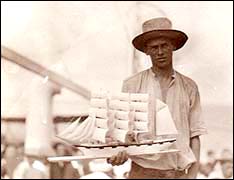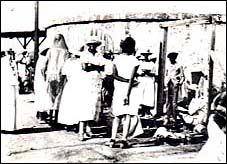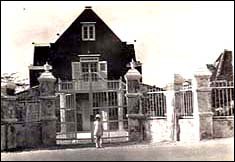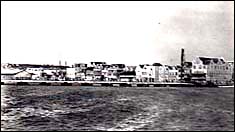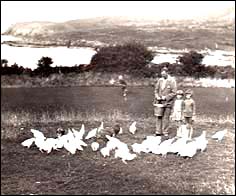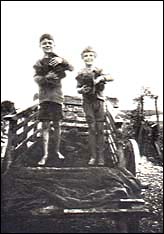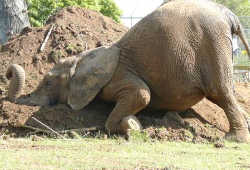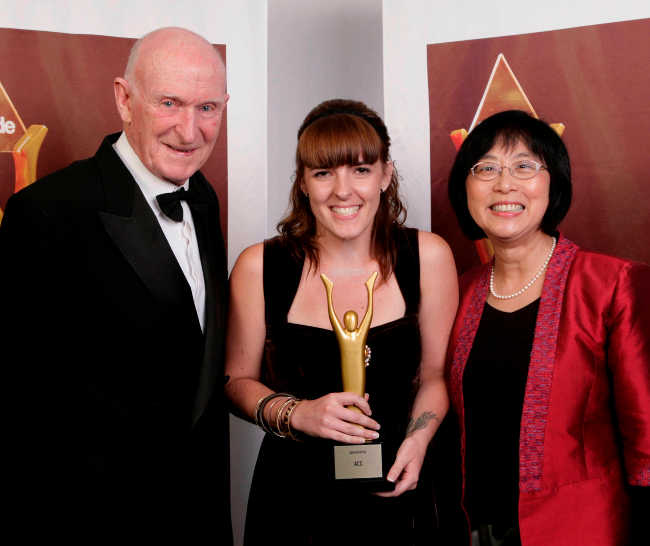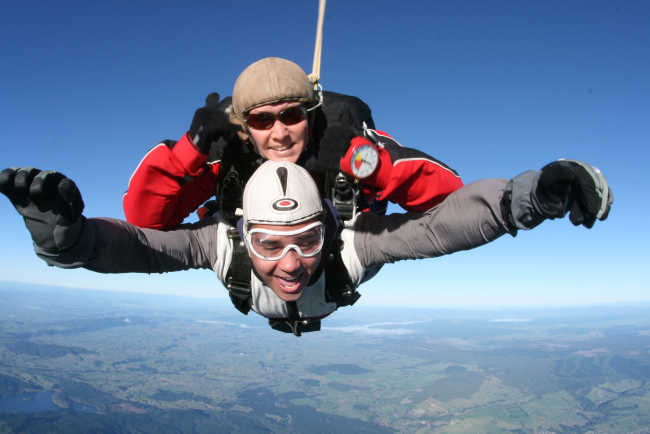A New Zealand writer Shares Memories Of Her Childhood. Ruth Fry – 16/03/01
Memories of a trip from New Zealand through the Panama Canal to England and to Kells in Ireland in the 1920s If you are seven or eight and living in New Zealand where you were born, you probably hear a lot about your parents’ childhood especially if it was spent in another country. You may even be taken on a visit to meet your grandparents, or some uncles, aunts and cousins. It will take you several days to make the journey to Scotland, Poland or France which you know are on the other side of the world – the ‘Old World’ as Great-Granny calls it – and you will go by fast plane.
My father was born in Ireland in Tralee, County Cork, in the south-west. He had a name which was recognisably Irish and people often asked me if I had been to Ireland. How I wished I had! Our father’s surname, which we all used, gave us a link with the family’s history. I began to realise that every family has its own story and the first step towards knowing something about it is to recognise the names. If your father was Scottish, you might be called Fiona McKay; or Maureen O’Donovan if he were Irish. And a girl of French origins might be Jacqueline de Lisle. And a boy from a Polish family could be called Marek Ogonowski, or Mieczyslav Surynt.
The Irish are good story-tellers and I picked up from my father some of the legends and history, the folklore of old Ireland.
You only have to ask the question, ‘Why….(or ‘When….) did your family come to New Zealand?’ to be caught up in the game of tracing family histories. My brother Brian (the name of an ancient Irish warrior-king) had a second name, Fitzgerald, meaning Gerald’s son.
This Gerald, my father, was a young man when he came to learn farming in New Zealand. He was put in the care of distant relatives living in Auckland and was enthusiastic about the little country that was becoming his home. He joined a scheme in which young trainees (called ‘cadets’) were placed on farms for practical work and linked with a correspondence course in Agriculture. See Photo Supplement 1 – Agriculture His switch to study theology with work in the Anglican Church may well have been tied up with the beginning of the First World War.
The war caused a good deal of anxiety and disruption, but the people of New Zealand, many of them having survived the rigours of pioneering days, soon put the disasters behind them and the country began to have a prosperous look. Several years had passed before my father announced one day that he was taking my mother, Brian and me to England and Ireland. It was not a surprise to us, for we knew he cherished the hope of one day returning to his birthplace. We were going for two years and there was a possibility that we might not return to live in New Zealand. We were not rich, but we had a few bits of furniture and other treasures that were precious to us and we took as much as we could, including our piano. Alas, we had to leave behind a Sydney Silkie pup, our cat and our first car, a Model T Ford that was provided for my father’s work as a country vicar.
It was June, 1928 when we left New Zealand in wintry weather with some sense of loss and anxiety as the smart ship, the SS Tamaroa, dropped its moorings and steamed out of Wellington Harbour. The ship seemed enormous and the smell of the engines was nauseating. It was some days before our bodies adjusted to the thugging of the engines and the irregular swelling of the waves. My poor mother was seasick for most of the voyage but was a little soothed by champagne which the ship’s doctor prescribed. We were not much bother to her as we soon found companions and old ladies who would prop us up beside them in their deck chairs and read to us from Alice in Wonderland. A welcome interruption came when longboats were rowed out through the surf off Pitcairn Island and, with the help of rope ladders, some of the islanders came aboard with strings of shell necklaces, carved wooden ornaments and seagrass baskets for sale or barter.
|
|
| Pitcairn Islander with a model for sale |
I had my sixth birthday party on deck with a cake made by the ship’s cook.
Soon after this excitement came the grim realisation that the chest cough Brian had developed was in fact pneumonia. It was long before the discovery of penicillin and all one could do was to wait for the crisis to pass – the signal of life or death. My mother, with her bag packed, was all ready to disembark at Panama if it was necessary to take him to hospital.
When, after intense anxiety, the doctor announced that the crisis was passed and the temperature down we went on our way with joy, sailing through the Panama Canal, calling in at Christabal, for fuel and going ashore for a few hours at the colourful Dutch island of Curaçao in the Caribbean. There I experienced the delectable thrill of walking for the first time on to a strange land. The wonder of such landings has never left me.
|
|
| The fish market at Curaçao |
|
|
| Typical architecture at Curaçao |
|
|
| The bridge of boats at Curaçao |
See supplement of photos of the Panama Canal in 1928 I was grateful to my parents for taking me to the ‘Old World’ at this age, and it was not difficult to adopt England as home. It was already there in stories, nursery rhymes and pictures.
Brian and I did not like the first school we were sent to – a small private establishment stuffy and unimaginative.
Boys, it was believed by many parents and educationists at the time, needed the extra discipline of a boarding school. Brian was therefore sent to a preparatory school on the south coast as a boarder. Our holidays were therefore special and one of these was the best holiday ever. I envied my English and Irish cousins their annual holiday at Kells, a small fishing settlement (hardly even a village) on the west coast of Ireland.
|
|
| Uncle Harry, Ruth and Kitty feeding the chickens |
There my father’s brother, Harry, kept a chicken farm because he developed the dreaded disease tuberculosis which was rife at the time. There was little hope for a cure for the disease then and doctors prescribed a life in the open air.
Uncle Harry lived with a sister in a row of small whitewashed coastguards’ cottages, two of which had been converted for him. A further three were kept in order for the family invasion which happened for a number of years every July.
When our family arrived there wasn’t a cottage for us but, whatever happened, we must go to Kells. We willingly agreed to live for six weeks in a large room above the boat house. This we loved. Each day began with a swim in the cold sea and breakfast in one of the cottages. This meal would sometimes be topped off with bits of cooked lobster which we broke into edible pieces while their ill-fated brothers crawled on the stone floor with ungainly grace, awaiting their turn in the pot of boiling water. At any time of the day we might cook up an extra meal of shrimps and prawns which we caught in small nets which my mother made for us out of wire and netting. Sometimes we would hear across the bay the haunting call of the fishermen who had spotted a shoal and in no time the men would be out with their nets.
My close friend and confidante was my cousin Kitty , the closest to me in age and the only other girl. This I did not mind one bit having already recognised that boys were better off than girls in everything.
Sometimes we were led off on long walks over the hills by eager adults who pointed out to us the bog violets and flashes of white heather among the purple. Patches of bog were a hazard, but they were a part of the lushness of the Irish countryside, as were enchanting sheltered corners where many mosses and wild flowers grew and the rowan branches dropped their brilliant berries over the fuchsias and ferns and ground cover. It wasn’t hard to imagine that fairies and leprechauns lived here. At least for that summer we looked for the little people.
However we were the only two girls and had to tread carefully as we felt we were accepted by our male playmates in all their activities for the time being and it was as if we were admitted into a club. We even wore the male uniform – boys’ trousers and shirts.
|
|
| Sandy and Kitty throwing out peat at Kells, County Kerry |
Along the land we often saw carts filled with peat led by slow old donkeys and aging couples. The men carried a loy, the spade shaped like a half moon used for cutting the turf, and the women drew their black shawls closely round them as the evenings became chilly and the golden weather was fading.
Photographs for this article were taken by Gerald Neligan and supplied by Ruth Fry, his daughter.

